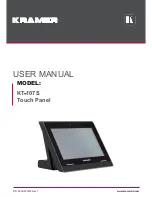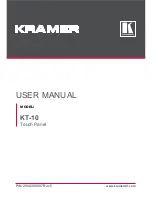
10
Solar Collectors - APOLLON
Piping:
the routing of the piping and cabling must be agreed upon between the installer and the client, so as to ensure
the proper installation of the solar system in compliance with local rules concerning water and electrical installations.
Make sure that the tubes connecting the storage tank with the collector and the piping to/from the water heater
are insulated in such a way that they can withstand temperatures covering the range of: -30°C to 120°C. Anti-UV
protection must be used for the insulation.
Antifreeze Liquid:
The special heat transfer medium used in the closed circuit protects the system from freezing and
from salt accumulation inside the collector tubes. The thermal fluid must be well mixed with water in a percentage that
is necessary to protect the system. The responsibility for the appropriate heat transfer medium quantity as well as for
the use of other liquid than the one accompanying the solar water heater lies on the installer and in no case on the
company. The use of water or inappropriate liquid may annul the warranty validity.
After the installation is completed, the area where the work was executed should be clean & tidy. The customer
should fill in the check list provided by the company. The company does not hold any responsibility that may be the
result of an inappropriate installation or incorrect use of components used for the solar water heater installation.
The installation is only allowed on roofs and flat surfaces of adequate bearing capacity. Before you proceed with the
installation, make sure that the roof and/or the construction is of adequate bearing capacity in terms of statics, always
according to the expected maximum loads at the installation point. If the installation is in a place with an extremely
big wind and snow load, the system as a whole should be statically checked by a skilled person, e.g a specialized
engineer. In special cases, strengthening or more solid constructions may be required.
APOLLON MEANDER COLLECTOR
INSTALLATION MODE
WIND LOAD
[km/h] / [kΝ/m
2
]
SNOW LOAD
[kΝ/m
2
]
Inclined surface
151 / 1.5
2.17
Flat surface
151 / 1.5
2.17
The rates listed in the above table relate to the resistance of the collector that has been tested on an inclined surface with an angle support of 15°-75° and on a
flat surface with an angle support of 35°. Τhe system may only be installed in locations with lower wind and snow load values than the ones mentioned above.
Space requirements for installation on the roof (TILED ROOF)
For the installation on the roof the following points must be taken care of:
y
The minimum distances from the ends of the roof should be:
- From the sides: distance equal to the width of two tiles
- From the top of the roof: distance equal to three rows of tiles
y
The minimum distance limit of 0.8 m should necessarily be respected, in order for the collectors and the mounting
accessories not to be exposed to winds the power of which increases on the perimetrical edges of the roof.
Space requirements for free standing installation (FLAT ROOF)
The system should be installed at least 1.5 m away from the edges of the roof so as for:
1.
The systems to be accessible for maintenance reasons.
2.
The systems and the fixing system not to be exposed to strong winds which are developed at the ends and
edges of the roof.
3.
The snow to be removed.






































